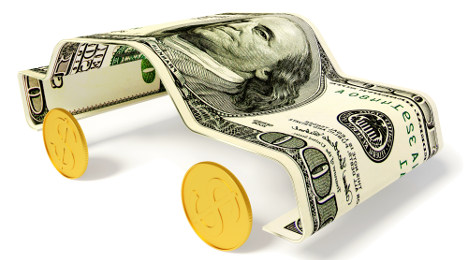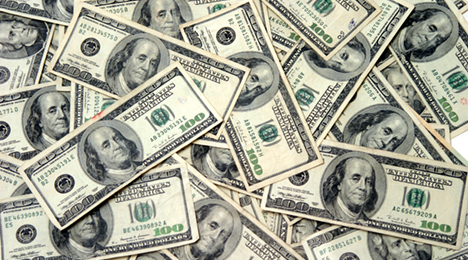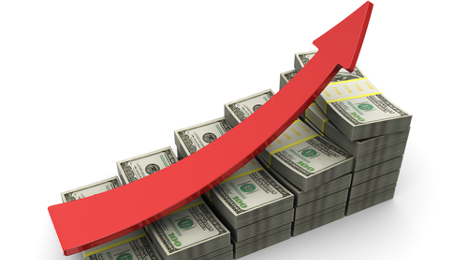Last year was the best ever for franchised dealers’ used-car operations, and the pre-owned industry as a whole had its strongest year since 2007, according to a report from Edmunds.com.
And the linchpin to these and other trends in the rapidly rising used-car market? Leasing, says Jessica Caldwell, the director of industry analysis at Edmunds.com.
The company’s 2015 Used Vehicle Market Report, released Wednesday, said there were 38.3 million used-vehicle sales industrywide, the best annual tally in eight years.
Franchised dealers sold 11.4 million used vehicles for the year, their best outing yet.
Other landmarks include a record used-car price tag of $18,600 of per vehicle sold and best-ever certified pre-owned sales of 2.55 million.
“The key factor driving all of the trends in used car sales today is the popularity of leasing, which is bringing younger and higher quality used cars back to the market,” Caldwell said in an analysis accompanying the report.
“We’re truly in the midst of a Golden Age for CPO and near-new used cars,” she said. “And with a record number of lease terminations expected in 2016, for the foreseeable future there certainly will be no shortage of supply to meet the growing demand for used cars.”
Going back to overall used-car sales, the last time they were this hot was 2007. That year, sales were just a shade higher (less than 4,000 units).
Then, of course, the recession happened shortly thereafter, and with it, brought a depressed auto environment – including a drying of the leasing well that often fuels used-car supply (particularly the CPO variety).
Leasing has stormed back with a vengeance, and fueled — among other effects — a heavy crop of CPO-worthy cars.
Edmunds' report shares lease penetration data for the past five years, each of which has shown a double-digit percentage increase.
“From 2012 to 2013, new-vehicle leases saw a spike of 657,949 units (or 25.6 percent), the largest ever year-over-year increase for leasing,” Edmunds said in its report. “These leases are steadily approaching their maturity date, and will help to supply the number of certifiable vehicles, which should push CPO’s share of franchise used sales closer to the 25-percent mark.”
Like any dealership that turns used vehicles, Sonic Automotive is keeping close tabs on what might be one of the most important metrics — gross profit per unit.
Sonic closed the year with a 3.1-percent dip in gross profit per used vehicle retailed, as the figure landed at $1,384.
The slight annual dip didn’t alarm Sonic executive vice president of operations Jeff Dyke because “we’ve done enough homework.” Dyke indicated that Sonic expects its gross profit in the used-vehicle department to be near $1,400, give or take $15 either up or down.
“I don't see that changing. I think we'll be right in that same ballpark as we move throughout the year,” Dyke said when Sonic reported its fourth-quarter and annual financial statements earlier this week.
“Our pre-owned business is really rolling on both sides of the table, EchoPark and Sonic. And so, we expect that to continue on,” he added.
Sonic closed the year by retailing 6.4 percent more used vehicles than in 2014, establishing a new company record at 117,123 units. And Dyke highlighted that Sonic is off to a great start in 2016 with regard to grosses on used turns.
“We’ve had a fantastic January. We're having a fantastic February from a pre-owned perspective, and margins are all in line about the same,” he said.
“You could fluctuate a little bit here and there. I guess with more off-lease cars coming, there's probably going to be a little pressure there, but nothing so drastic that it’s going to make that big a difference,” Dyke went on to say.
Nevertheless, Wall Street observers wondered if the margin pressure experienced when dealerships are trying to move new luxury models would be impacting Sonic’s efforts to turn used high-line vehicles. Dyke acknowledged there might be some impact on certified pre-owned luxury units but not non-CPO vehicles, which constitute about 30 percent of Sonic’s overall used-sales volume.
“Every car, from our perspective, has got its own unique individuality, and we sell it based on the value that our systems tell us what we can get for that vehicle, and so, we've been really consistent in our margin,” Dyke said.
“If you look not just a couple of quarters but for a long while now, we sort of target that ballpark, and we feel like that's where we get our best turn and where we gets the best volume, which overall generates the most gross dollars and related gross dollars for the category,” he went on to say.
EchoPark update
Sonic reported that its trio of EchoPark locations — the uniquely branded stores dedicated to selling only used vehicles — turned 3,225 vehicles last year. That network of stores is expected to grow quickly because of the strategy Sonic wants to employ, opening four or more stores simultaneously instead of just one at a time. Why?
The company indicated it costs at least $7 million to build a new EchoPark location, taking six months for construction that executives are hoping to shave down to four.
“One of the other reasons why we are waiting to open simultaneously is when we order the materials for construction, it’s significantly less expensive and we can move significantly faster in erecting facilities and it’s bringing the costs down for these pods,” Sonic chief executive officer Scott Smith said.
Dyke added, “And on top of that, the training that we do. We’ll train for four or five stores at one time versus training one store at a time, which reduces cost as well.”
The success thus far of Sonic’s three EchoPark locations near Denver is another reason why Dyke has high expectations for two more locations in the market that are projected to open later this year.
“We’ve learned a lot with our first three stores opening. We’re very pleased with the amount of volume and gross that we're getting out of those stores, and so it won’t be long now that we'll see a bunch more EchoPark stores up and running,” Dyke said.
Technicians and reconditioning
Sonic hired more than 200 technicians to work in its service bays a year ago. Dyke would like to bring in another 100 tech to keep dealer group operations performing at peak capacity.
“We’re working every day to bring more techs on board,” he said. “We’re always out looking for more technicians. And we have the capacity for them and we’re building more capacity in our facilities. So, no question, we’d hire more technicians.”
Part of the reason why Sonic has such a high demand for technicians is the reconditioning the company does to used vehicles.
“We have one set reconditioning standard for our vehicles at EchoPark and a set reconditioning standard for our vehicles at Sonic Automotive and we follow those to the T,” Dyke said.
“That’s one of the, we think, competitive advantages that we have,” he continued. “We have a low return ratio in terms of those cars, and we’re really focused a lot on making sure that the product that we put out on our lot is a high-quality product from a reconditioning perspective.”
Sonic Automotive established nine new quarterly or annual performance records, and the dealer group’s used-vehicle department led the way.
According to Sonic’s latest financial statement released on Tuesday, the company retailed 6.4 percent more used vehicles in 2015 than it did a year earlier, turning 117,123 units. That figure included the metal moved at its EchoPark stores, locations that focus on only used vehicles. Sonic retailed 3,225 units at EchoPark.
All those used sales helped Sonic set a record in pre-owned gross profit, which ticked up 3.1 percent year-over-year to $162.0 million.
The company’s annual total gross profit also set a record, coming in at $1.415 billion. Part of that figure came from a new record for annual fixed operations gross profit of $655.4 million.
Sonic also set a new annual record when retailing new vehicles. The dealer group retailed 138,129 new units in 2015, up 1.6 percent over the prior year.
When looking at only the fourth quarter, Sonic closed with four more record-setting performance that sparked the year-end tallies, including the following listed by Sonic:
— Record Q4 pre-owned units and gross profit of 28,220 and $38.8 million, respectively
— Record Q4 new retail units of 35,228, up 1.4 percent over the prior-year quarter
— Record Q4 fixed operations gross profit of $169.1 million, up 8.2 percent over the prior-year quarter
— Record Q4 total gross profit of $363.8 million, up 4.4 percent over the prior-year quarter
Sonic reported full-year adjusted net income from continuing operations of $100.2 million, or $1.97 per diluted share, that includes expenses of $16.3 million, or $0.19 per diluted share, related to the company’s EchoPark operations. For all of 2014, Sonic reported adjusted net income from continuing operations of $100.0 million, or $1.90 per diluted share, that includes expenses of $15.7 million, or $0.18 per diluted share, related to EchoPark.
For just Q4, Sonic generated adjusted net income of $30.9 million, or $0.61 per diluted share. Included in these adjusted amounts are pre-tax expenses of $3.6 million, or $0.04 per diluted share, related to EchoPark operations. To close 2014, the company posted $32.5 million, or $0.63 per diluted share in adjusted net income.
“The year ended up being a great year for Sonic and EchoPark,” Sonic’s executive vice president of operations Jeff Dyke. “I am very proud of our team as we progressed together on our long-term strategy to redefine the automotive guest experience. This is a huge undertaking that we are confident will reward our guests, associates and long-term shareholders.
“We have been able to grow gross across all of our revenue streams with the exception of new vehicles, which is a direct reflection of manufacturers' inventory growth in particular in the luxury category. Some of the OEM's have simply over produced and it has caused competitive and margin pressures that we have not experienced in several years,” Dyke continued.
“However, the stability and strength of our pre-owned revenue stream has continued to allow us to drive additional profitability in that area,” he went on to say. “In addition, we have overcome the warranty mix issues from earlier in the year, and we were able to increase same store fixed operations gross profit 9.6 percent in the fourth quarter of 2015 compared to the fourth quarter of 2014.
“Our focus on increasing customer pay, up 7.8 percent on a same store basis during the fourth quarter, was key to achieving this level of growth,” Dyke added.
Dyke called the upcoming growth for EchoPark as “exciting.” Sonic plans to open two more locations in the Denver market during the first half of this year with a pair coming on board in the beginning portion of 2017.
“We also have plans in place to add additional stores in at least two different markets beginning in Q4 2016 depending on real-estate closing dates,” Dyke said.
Editor’s note: For more details about EchoPark and Sonic’s technology investments, watch for a report coming later this week as a part of Auto Remarketing Today.
On-demand field inspection and verification services provider WeGoLook reported this week that the company wrapped up 2015 with a total revenue growth of 300 percent year-over-year.
The company that can examine vehicles among other services also finished the year with a $2.75 million aggregate Series A funding round.
This past year, WeGoLook added more than 50 new staff members. The company anticipates adding 75 new staffers by the end of this year.
WeGoLook also expanded its community of what it calls “lookers,” a group comprised of mobile notaries, process servers, school teachers, retired veterans, pastors, mechanics and other persons utilizing the opportunities within the crowdsharing economy. The amount of “lookers” grew by 30 percent a year ago to 20,000 mobile agents who are based nearby and who can complete assignments at a moment’s notice.
“We look forward to a new year of record growth through adding new enterprise customers, supporting existing customer rollouts and scaling up operations by hiring new staff and adding new mobile agents to our community of lookers,” said Robin Smith, WeGoLook's chief executive officer.
“With our funding completed and revenue growth on the rise, we anticipate an even stronger year for WeGoLook in 2016, as we see the need for professional verification services growing within a variety of B2B industries,” Smith added.
Smith also discussed the company’s strategy during Used Car Week last November.
Penske Automotive Group released its fourth-quarter and full-year financial results on Thursday, claiming 2015 as the most profitable year in company history.
This was powered, in part, by an 8.98-percent year-over-year increase in total global used-vehicle sales, which reached 198,459 units. This contributed to the group’s increase in total automotive retail units of 11.9 percent compared to 2014. Excluding foreign exchange, Penske’s total revenue in 2015 increased by 14 percent.
Roger Penske, the group’s chairman, highlighted the impetus behind his company’s year of growth.
“The diversification provided by our business model continues to drive our business forward,” he said. “Our U.K.-based retail automotive and U.S.-based commercial truck businesses produced exceptional results, and the stability of the parts and service business helped our business produce another solid quarter. We expect 2016 will be another solid year for both automotive and U.S. commercial truck sales.”
Here’s a breakdown of Penske Automotive’s fourth-quarter and full-year 2015 results, from the used-car sales angle, on a global scale.
Penske Automotive's 2015 Used-Vehicle Retail Results
| |
Fourth-Quarter 2015 (2014 comp.) |
Full-Year 2015 (2014 comp.) |
| Units Retailed |
|
|
| Same Store |
45,150 (44,136) |
189,548 (180,155) |
| Overall |
49,741 (44,136) |
198,459 (182,109) |
| Revenue (millions) |
|
|
| Same Store |
$1,271.3 ($1,197.3) |
$5,233.3 ($4,924.9) |
| Overall |
$1,364.8 ($1,197.3) |
$5,425.5 ($4,971.1) |
| Gross Profit (millions) |
|
|
| Same Store |
$69.6 ($73.1) |
$322.4 ($332.8) |
| Overall |
$70.7 ($73.1) |
$328.3 ($335.5) |
According to a release from Penske, the group acquired retail automotive franchises and U.S. commercial truck dealerships that are expected to generate roughly $500 million in estimated annualized revenue.
The good news for Group 1 Automotive’s used-vehicle department: The dealer group turned 12.1 percent more used models in 2015 than its stores did a year earlier.
The not-so-good news for Group 1's used performance: Margins on those retail sales softened by 6.3 percent year-over-year.
Company officials shared their fourth-quarter and full-year financial report on Thursday and highlighted that Group 1 stores retailed 105,211 used vehicles in 2015. The average retail price for those used units rose 2.2 percent to $20,955.
However, the gross profit on those used turns settled just below $1,500. According to Group 1, it came in at $1,498, a $100 decline.
On the new-vehicle side, Group 1 sustained a similar drop-off in gross profit as the full-year reading dipped by $94 or 5.3 percent to $1,691. But also like its used-vehicle department, Group 1 moved more new metal as 142,256 units rolled over the dealer group’s curbs in 2015, a 5.1-percent rise year-over-year.
Also of note among the full-year gross profit readings, Group 1 reported its F&I margins came in almost identical year-over-year. The F&I gross profit stood at $1,515 per retailed unit in 2015 after registering in at $1,521 a year earlier.
Eventually, the turning of all of those new and used vehicles as well as F&I activity propelled Group 1 to a full-year adjusted net income record.
The company generated a 9.0-increase in adjusted net income to a record $165.5 million, and adjusted diluted earnings per common share increased 17.0 percent, to an all-time high of $6.87.
Group 1 also highlighted total revenue grew 7.0 percent to a record $10.6 billion.
On a GAAP basis, net income increased 1.1 percent from the comparable prior-year period to $94.0 million.
“While we delivered a record year in total for revenue, gross profit, and adjusted diluted earnings per share, our fourth quarter results were significantly hampered by the negative impact of continued oil and gas price decreases on the economy in our prime markets of Houston, Oklahoma and Texas in general,” Group 1 president and chief executive officer Earl Hesterberg said.
“Additionally, we suffered from increased new and used vehicle margin pressure resulting from oversupply in a variety of key brands, especially in the U.S. luxury segment,” Hesterberg said.
Despite the headwinds Hesterberg referenced, Group 1 indicated its total Q4 revenue increased 5.3 percent — or 8.2 percent on a constant currency basis — to $2.7 billion. And total gross profit grew 3.9 percent to $380.1 million.
The company noted its Q4 retail used-vehicle revenues increased 11.0 percent on increased unit sales of 10.0 percent. For the quarter, retail used-vehicle gross profit was flat at $40.7 million, as margins decreased 9.2 percent or $136 per unit, to $1,346.
On the new-model side, Q4 revenues rose 3.2 percent on 3.0 percent higher unit sales. New-vehicle gross profit for Group 1 decreased 3.7 percent to $80.1 million as margins decreased 6.6 percent or $130 per unit to $1,843.
Also in Q4, F&I gross profit per retail unit was flat at $1,374 per unit.
Editor’s note: Watch for a report in an upcoming installment of Auto Remarketing Today detailing how Group 1 Automotive is navigating the challenges associated with its used-vehicle inventory as well as acquisition possibilities.
The recent Iowa caucuses are in the books and it’s time to shift the political focus to Tuesday’s New Hampshire primaries.
Similar to the tight legislative races vying for each party’s presidential nominations, the Edmunds.com data for New Hampshire shows that many of the state’s new-car buying tendencies are similar to the national averages.
Let’s break it down by the numbers. Forty-two percent of new-car purchases made in 2015 in the United States were bought from domestic brands. In New Hampshire, just under 40 percent of the vehicles bought last year were domestic.
One area New Hampshire differs substantially from the rest, however, is in the purchase of Japanese-made vehicles. Forty-six percent of the new vehicles sold in New Hampshire last year were Japanese, compared to the national average of 41 percent.
Another area where New Hampshire is similar to the national scope is by vehicle type. SUVs made up 41 percent of the state’s purchases last year, compared to 37 percent nationally.
This was followed by 37 percent cars (44 percent nationally), 18 percent trucks (15 percent nationally) and 4 percent vans (the same as the national average).
Following Iowa’s theme of blue-collar status, New Hampshire showed a substantially lower average number of luxury new-car sales last year, with a take rate of 8 percent (compared to the national average of 13 percent).
The state fell almost perfectly in line with the national average of sales share by fuel type, with the majority being gasoline-powered (85 percent in N.H., 83 percent nationally), followed by 11 percent flexible-fueled (11 percent both in N.H. and nationally), diesel (3 percent both in N.H. and nationally), hybrid-powered (2 percent in N.H., 3 percent nationally) and EVs (0.1 percent in N.H. and 0.4 percent nationally).
To check out our similar analysis of vehicles sold in Iowa last year, click here.
Bernie Sanders or Hillary Clinton? Donald Trump or Ted Cruz? These folks may be the current polling frontrunners in the state of Iowa, which was set to hold its caucuses Monday night, but the state’s frontrunners in the new automotive space are a bit clearer: They tend to buy American.
A recent analysis of 2015 new-car registration data by Edmunds.com shows that 63 percent of Iowa’s purchases last year were from domestic brands. That’s a hefty portion of the state, especially considering domestic new-vehicle purchases accounted for roughly 42 percent of those purchased throughout the entire United States last year.
This may also have a lot to do with the fact that 24 percent of those purchases made in the farming-heavy state last year were pickup trucks (compared to 15 percent nationally), a segment heavily dominated by domestic manufacturers. Add SUVs to the trucks, and you’ll see that those two segments combined accounted for 63 percent of all new-vehicle registrations in Iowa last year, compared to 52 percent nationally.
That blue-collar theme appears to repeat itself when looking at the luxury versus non-luxury spread in Iowa, where only 5 percent of the vehicles registered in the state last year fall into the luxury category, compared to the industry average of 13 percent nationwide.
The fact that flex-fuel vehicles, equipped with engines that can handle fuel with higher ratios of ethanol, make up 16 percent of Iowa’s new purchases last year is probably not a surprise to the state’s residents considering half of all of the state’s corn is used to produce ethanol. That’s a substantial increase over the national average of 11 percent.
And although Iowa may be considered a “blue” state in the political sense in recent years, with President Barack Obama winning the state in the last two elections, in a car-color sense, red beats out blue in Iowa, with 14.1 percent of the vehicles registered in the state last year being red (compared to 9.4 percent blue). Red was by no means the most-popular color, however (it was fourth); white, black and silver were the most-registered colors in the state, respectively.
Sixteen percent of AutoNation’s used-vehicle inventory was unable to be sold at the end of last year due to its own internal policy to not sell any vehicles with open safety recalls. Add that to the less than 2 percent of their new-vehicle inventory affected by the same policy, this represents roughly 6 percent of all of AutoNation’s inventory that it had grounded at the close of 2015 for this reason.
Bill Berman, AutoNation’s executive vice president and chief operating officer, says this policy, which AutoNation put in place last year, has certainly impacted the company’s used-vehicle sales – but will prove to be worth it.
“We continue to implement systems and processes in support of our efforts to ensure no vehicle with an open recall is retailed,” Berman said. “We continue to believe the long-term safety benefits for our customers far outweigh the short-term impact to our results and further support the AutoNation brand promise.”
Pointing out that the recall policy has virtually no impact on new-vehicle sales, AutoNation chairman, chief executive officer and president, Mike Jackson, believes the short-term discomfort the recall policy is having will iron out within the first half of 2016 and will eventually be a selling point for its customers.
“It’s a significant impact on preowned. Just to discuss the issue for a moment, I think the auto industry really had some credibility issues it has to face up to,” Jackson said. “Everything from some of these horrific recalls we’ve had with significant loss of life to credibility issues around the Volkswagen situation. So we sit there and say, you know, what can we do on our part to make it better? So on preowned it’s a significant issue. On any given day 15 percent of our inventory has open recalls.
“These are significant safety recalls and we feel the time has passed that it’s appropriate to take a vehicle in trade with a significant safety recall and turn around the next day and sell it to a consumer,” he continued. “We’re the only one that’s done it, we think it’s a brand attribute, we will work to make it a brand attribute in 2016, and we feel in the long term it will be a tremendous advantage to us. In the meantime, it’s very disruptive to our used-car business because we see no way to get it below 15 percent with new recalls arriving every day. So we have to increase inventory to get to the same point.”
Although Jackson does say that the disruption from these recalled vehicles being grounded impacted used sales, he thinks there is a bigger issue for the industry that “pulls the rug out from under” AutoNation’s used-car inventory: new-vehicle incentives.
“I think the biggest threat to used-car values are additional incentives from the manufacturers, or additional discounts from us,” Jackson said. “That’s the big-picture issue. So it’s very interesting, our fourth quarter performance, where manufacturers are increasing incentives by $250 a car, us increasing our discount by $20 a car, that had an immediate impact on our used-car values. And then we had to discount anything that was relatively new versus the new vehicle on the showroom floor. It’s a double impact. It impacted our new-vehicle gross margin. It impacted our used-vehicle gross margin. That’s the biggest issue and that’s my greatest concern about over-production.”
Jackson said he hopes incentives won’t go further into the double-digit percentages than they currently are, which he said is roughly 10 percent, because it disappoints his dealer base and his customers by depreciating their trade-in values.
To check out AutoNation’s fourth-quarter and full-year sales results for 2015, click here.
Depending on whose prediction you look at, the currently projected estimation for new-vehicle sales in January is expected to decline from as little as half a percent to as much as 3 percent compared to January 2015. The used-car market, however, is expected to clear 3.05 million vehicles by Monday, which would result in roughly a 2-percent increase over last-year’s January results.
According to the analysts at Edmunds.com, the 3.05 million used vehicles they anticipate will have been sold in the United States in January would be a slight increase over the 2.99 million they say were sold in January 2015.
Unfortunately, it appears as though new-vehicle sales did not weather the harsh snow the country experienced in January quite as well.
Edmunds is predicting that 1,143,839 new vehicles will be sold in the U.S. in January, while Kelley Blue Book is estimating that 1.12 million new vehicles will be sold by the end of January.
"As expected, Winter Storm Jonas limited car sales from reaching their full potential, especially for import brands, which are traditionally popular in East Coast markets," said Jessica Caldwell, Edmunds.com’s director of industry analysis. "But weather factors aside, this was still a pretty good month for car sales. The January sales rate typically falls on the low end of the curve every year, so if historic patterns hold we're off to a healthy start for 2016."
Edmunds pointed out that 19.5 percent of total new sales in January were made up of fleet transactions. The company’s estimated SAAR came out to 17.5 million.
KBB analyst Tim Fleming agreed with Caldwell, saying that the blizzard’s impact on densely populated areas hurt dealer foot traffic. Also pointing out that January tends to be the slowest sales month of the year, he believes that any lost sales will be postponed until February.
Fleming believes that the compact car segment will be the one to watch this year.
“One segment to watch in 2016 will be compact cars,” Fleming said. “Similar to mid-size cars, market share for these models has been declining for the past three years. While this trend could continue this year, three of the top four models in this segment (Honda Civic, Chevrolet Cruze and Hyundai Elantra) will have redesigned models on the market in the first half of the year. Much of the focus recently has been on the booming growth of small SUVs, but the new small cars on the way could spark consumer interest.”
Other than the weather, January also had fewer sales days (24) compared to last year (26).












